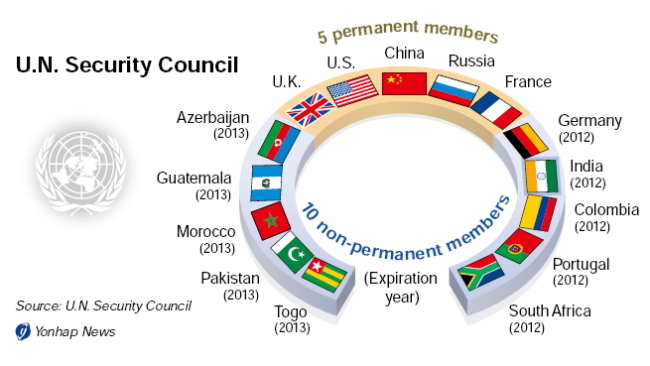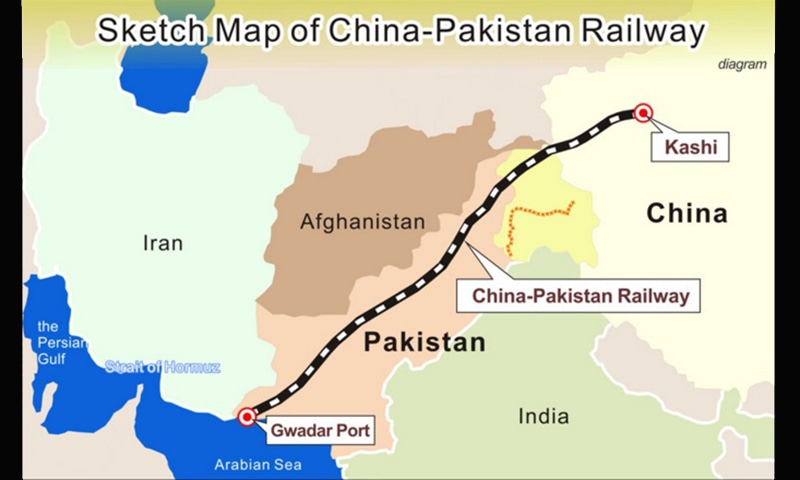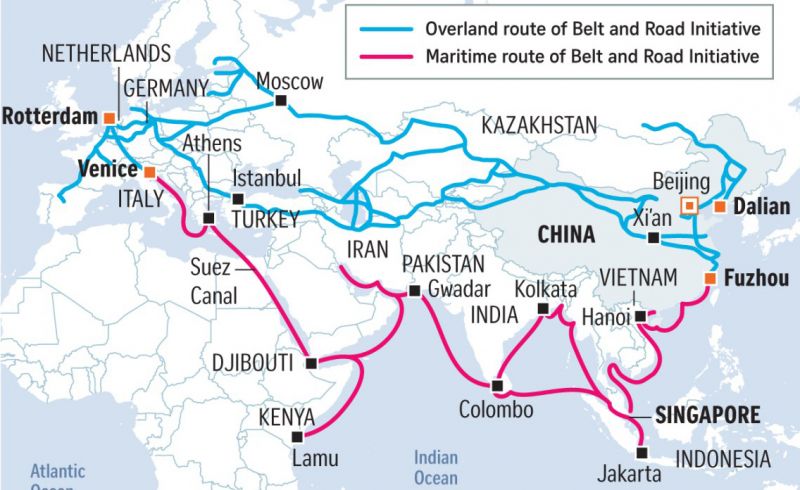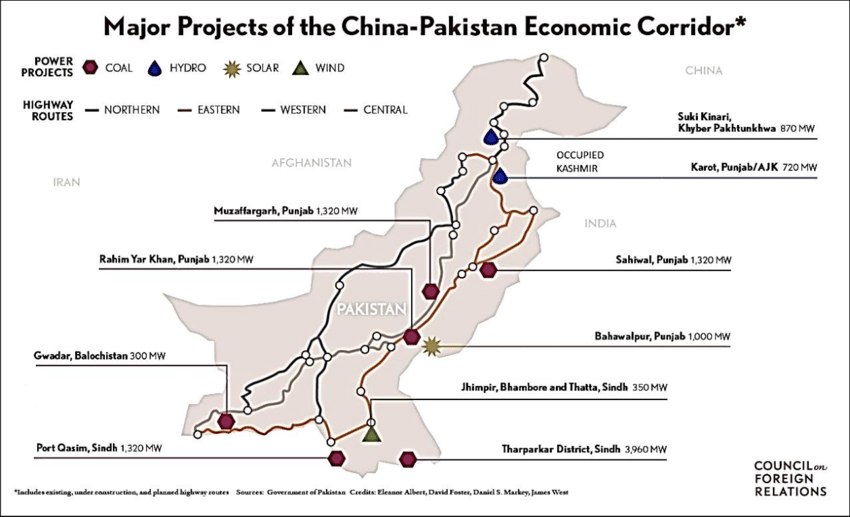Contents
- Electronics incentive schemes launched
- India Set to Re-enter UN Security Council
- Pashmina goats hit as the LAC conflict
- China’s New High-Security Compound in Pakistan
- China’s delay in releasing information frustrates WHO
- China to build power project in POK despite India objection
ELECTRONICS INCENTIVE SCHEMES LAUNCHED
Focus: GS-III Indian Economy
Why in news?
Telecom and IT Minister launched three incentive schemes with a total outlay of about ₹48,000 crore to boost large-scale manufacturing of electronics in the country, on 2nd June 2020.
The Three Incentive Schemes to boost Manufacturing of Electronics
The Three Schemes that were approved by the Union Cabinet in March 2020 are:
- Production Linked Incentive
- Component Manufacturing Scheme
- Modified Electronics Manufacturing Clusters
India had emerged as the second largest mobile manufacturer of the world. With the three new schemes, the government aims to manufacture electronics worth ₹8 lakh crore, while generating employment for about 10 lakh people in the next five years.
This is a step towards self-reliant India.
Production Linked Incentive (PLI)
Production Linked Incentive (PLI) is targeted at mobile phone manufacturing and specified electronic components – The government initially plans to incentivise 10 firms — five global and five local firms.
Globally 5-6 companies control 80% of the mobile market, hence five global companies will be allowed to participate in the PLI, and in order for upliftment indigenous firms, five Indian companies will be incentivized as well.
Scheme for Promotion of Manufacturing of Electronic Components and Semiconductors (SPECS)
The SPECS shall provide financial incentive of 25% on capital expenditure for the identified list of electronic goods, i.e., electronic components, semiconductor/ display fabrication units, Assembly, Test, Marking and Packaging (ATMP) units, specialized sub-assemblies and capital goods for manufacture of aforesaid goods.
Modified Electronics Manufacturing Clusters (EMC 2.0) Scheme
The EMC 2.0 shall provide support for creation of world class infrastructure along with common facilities and amenities, including Ready Built Factory (RBF) sheds / Plug and Play facilities for attracting major global electronics manufacturers, along with their supply chains.
-Source: The Hindu
INDIA SET TO RE-ENTER UN SECURITY COUNCIL
Focus: GS-II International Relations
Why in news?
India is set to re-enter the UN Security Council for the eight time, as it is the sole contender for the Asia Pacific seat, after the General Assembly holds polls for electing the five non-permanent members on June 17.
Details
- UNGA will have new voting arrangements due to the Covid-19 restrictions.
- India’s candidature for 2021-22 for the lone seat from Asia Pacific had been unanimously endorsed by 55 members of the group June 2019.
- The new term will be critical for India, which has been pushing for inclusion of more permanent members to the UNSC.
Main Organs of United Nations
- United Nations General Assembly (UNGA),
- United Nations Security Council (UNSC),
- The Economic and Social Council (ECOSOC),
- United Nations Trusteeship Council,
- The International Court of Justice (ICJ),
- UN Secretariat.
United Nations Security Council
- The Security Council is one of the six main organs of the United Nations.
- Its primary responsibility is the maintenance of international peace and security.
- While other organs of the United Nations make recommendations to member states, only the Security Council has the power to make decisions that member states are then obligated to implement under the Charter- Hence, It is the only body of the UN with the authority to issue binding resolutions to member states.
- Resolutions of the Security Council are typically enforced by UN peacekeepers, military forces voluntarily provided by member states and funded independently of the main UN budget.
- It has 15 Members (5 as Permanent Members and 10 as Non- Permanent Members), and each Member has one vote.
- Five permanent members: China, France, Russian Federation, the United Kingdom, and the United States. Each of the Permanent Members has Veto Power over every decision of UNSC.
- The Permanent Residence of UNSC in the UN Headquarters New York City, USA.
- The presidency of the Council rotates monthly, going alphabetically among member states.

Functions and Powers of UNSC:
Under the United Nations Charter, the functions and powers of the Security Council are:
- to maintain international peace and security in accordance with the principles and purposes of the United Nations;
- to investigate any dispute or situation which might lead to international friction;
- to recommend methods of adjusting such disputes or the terms of settlement;
- to formulate plans for the establishment of a system to regulate armaments;
- to determine the existence of a threat to the peace or act of aggression and to recommend what action should be taken;
- to call on Members to apply economic sanctions and other measures not involving the use of force to prevent or stop aggression;
- to take military action against an aggressor;
- to recommend the admission of new Members;
- to exercise the trusteeship functions of the United Nations in “strategic areas”;
- to recommend to the General Assembly the appointment of the Secretary-General and, together with the Assembly, to elect the Judges of the International Court of Justice.
India’s Case for obtaining the UNSC Permanent Member Status:
- India joined the U.N. in 1945 (2 years before independence) and India has been an active participant in all initiatives undertaken by the UN like Millennium Development Goals, Sustainable development goals and various UN summits, including on climate change
- In the past, India’s was offered to join the UNSC by both the superpowers, the US and the then Soviet Union in 1950 and in 1955 respectively, India denied the offer due to Cold war politics in that era.
- Currently, there are more than 6,700 troops and police from India who have been deployed to UN peacekeeping missions, the fourth highest amongst troop-contributing countries (having almost twice the number of peacekeepers deployed on the ground by the Permanent 5 countries)
- India has been elected for seven terms for a two-year non-permanent member seat till now.
- India is the world’s fifth-largest economy by nominal GDP and third largest by purchasing power parity and maintains the world’s second-largest active armed force (after China) and is a nuclear-weapon state.
- India’s acquired status of a Nuclear Weapons State (NWS) in May 1998 also makes India a natural claimant as a permanent member similar to the existing permanent members who are all Nuclear Weapon States.
Who Backs India for a Permanent Seat in UNSC and who Doesn’t?
- India’s bid for permanent member of UNSC is now backed by four of the five permanent members, namely France, Russia, United Kingdom and United States.
- On 15 April 2011, China officially expressed its support for an increased Indian role at the United Nations, without explicitly endorsing India’s Security Council ambitions.
- A few months later, China endorsed Indian candidacy as a permanent UNSC member provided that India revokes its support for Japanese candidacy.
- As part of the G4 nations, India is supported by Brazil, Germany, and Japan for the permanent seat.
What is the benefit to India if made a permanent member of UNSC?
- Permanent seat in the UNSC, would provide India with the much-needed leverage to expand its geo-political and geo-economic clout globally.
- Inclusion of India into UNSC will help in transforming its status from being a responsible stakeholder and pave the way for playing its part as one of the global rule makers.
- Indian presence at the Security Council would ensure Indian interests are not neglected amidst the decisions of great power politics.
- India will gain strength to act as a counterweight to China as China is growing to be a more potent rival, an emerging hegemony in Asia and an ever-increasing strategic and security concern.
- Indi will gain the ability stall any possible intervention by China, a permanent member which can take action at the behest of its ally Pakistan.
How does India’s Inclusion as permanent member help UNSC?
India in many ways is a sui generis (unique)country, the only example in history of a billion-plus people working together in a democratic framework, hence: A seat for India would make the body more representative and democratic. With India as a member, the Council would be a more legitimate and thus a more effective body.
-Source: Economic Times
PASHMINA GOATS HIT AS THE LAC CONFLICT
Focus: GS-III Environment and Ecology
Why in news?
The Chinese Army’s intrusion in Chumur and Demchok since January has left Ladakh’s nomadic herding Changpa community cut off from large parts of summer pastures.
Details
- The People’s Liberation Army has taken over 16 kanals (two acres) of cultivable land in Chumur and advanced around 15 km inside Demchok, taking over traditional grazing pastures and cultivable lowlands.
- This has destabilised the movement of over 2,000 members of the nomadic community.
- In a cascading effect, this has resulted in a sharp rise in deaths of young Pashmina goats.
- The much-valued wool from the Ladakh herds is essential for the prized Pashmina shawls woven in Kashmir and famous for their intricate hand work.
Changthangi or Pashmina goat
- The Pashmina goat is a breed of goat inhabiting the plateaus in Tibet, Nepal, parts of Burma and neighbouring areas of Ladakh in Jammu and Kashmir, India.
- It is also known as ‘Changthangi’, ‘Changra”.
- They are raised for ultra-fine cashmere wool, also known as pashmina once woven.
- These goats are generally domesticated and are reared by nomadic communities called the Changpa in the Changthang region of Greater Ladakh.
- The Changthangi goats have revitalized the economy of Changthang, Leh and Ladakh region.
Pashmina wool
- Pashmina is a fine type of cashmere wool.
- The textiles made from it were first woven in Kashmir.
- Often shawls called shahmina are made from this material in Kashmir and Nepal; these shawls are hand spun and woven from the very fine cashmere fibre.
- Bureau of Indian Standards (BIS) had published an Indian Standard for identification, marking and labelling of Pashmina products on August 2019 to certify its purity.
- Kashmir Pashmina has been accorded Geographical indication (GI) tag under Geographical Indications of Goods (Registration and Protection) Act, 1999.
Changpa
- The Changpa are a semi-nomadic Tibetan people found mainly in the Changtang in Ladakh and in Jammu and Kashmir.
- The homeland of the Changpa is a high-altitude plateau known as the Changtang, which forms a portion of western and northern Tibet extending into southeastern Ladakh.
- The Changpa of Ladakh are high altitude pastoralists, raising mainly yaks and goats.
- The Changpas rear the highly pedigreed and prized Changra goats (Capra Hircus) that yield the rare Pashmina fiber (Cashmere wool).
-Source: The Hindu
CHINA’S NEW HIGH-SECURITY COMPOUND IN PAKISTAN
Focus: GS-II International Relations
Why in news?
- Recent satellite images appear to show that several new complexes have been built by China in the last few years and one of them in Gwadar, identified as being used by a Chinese company involved in port development, has unusually high security.
- Whether the Chinese naval base materializes remains to be seen. But these new sites, including the heavily defended compound, may indicate that the next phase of port construction is imminent.
Significance of Gwadar Port
- Located at the western end of Pakistan’s coast, Gwadar is expected to be a major port in China’s Belt and Road Initiative.
- This will allow Chinese goods to shortcut through Pakistan, instead of sailing all the way around South Asia.
- If the Chinese Navy does begin using the port, it will highly strengthen their capabilities in the Indian Ocean.

What is Belt and Road Initiative (BRI) One Belt One Road (OBOR)?

- One Belt One Road (OBOR), also called the Belt and Road Initiative (BRI), the brainchild of Chinese President Xi Jinping, is an ambitious economic development and commercial project that focuses on improving connectivity and cooperation among multiple countries spread across the continents of Asia, Africa, and Europe spanning about 78 countries.
- Initially announced in the year 2013 with the purpose of restoring the ancient Silk Route that connected Asia and Europe.
- The project involves building a big network of roadways, railways, maritime ports, power grids, oil and gas pipelines, and associated infrastructure projects.
- The project covers two parts. The first is called the “Silk Road Economic Belt,” which is primarily land-based and is expected to connect China with Central Asia, Eastern Europe, and Western Europe.
- The second is called the “21st Century Maritime Silk Road,” which is sea-based and is expected to will China’s southern coast to the Mediterranean, Africa, South-East Asia, and Central Asia.
- Landlocked Nepal has recently joined OBOR by signing a deal that will help it improve cross-border connectivity with China, and Pakistan is set to benefit from the $46 billion China Pakistan Economic Corridor (CPEC) that will connect southwestern China to and through Pakistan, allowing access to Arabian Sea routes.
-Source: Forbes
CHINA’S DELAY IN RELEASING INFORMATION FRUSTRATES WHO
Focus: GS-II International Relations
Why in news?
- Throughout January, the World Health Organization publicly praised China for what it called a speedy response to the new coronavirus and thanked the Chinese government for sharing the genetic map of the virus “immediately.”
- However, it is said that Chinese officials sat on releasing the genetic map, or genome, of the deadly virus for over a week after multiple government labs had fully decoded it, not sharing details key to designing tests, drugs and vaccines.
WHO and China’s narratives
- Although WHO continued to publicly commend China, the recordings obtained by the AP show they were concerned China was not sharing enough information to assess the risk posed by the new virus, costing the world valuable time.
- Strict controls on information and competition within the Chinese public health system were largely to blame, has found from internal documents, emails and dozens of interviews.
- WHO officials worried about how to press China for more information without angering authorities or jeopardizing Chinese scientists, whom they praised for decoding the genome with astonishing speed.
- China’s top medical authority, the National Health Commission, issued a confidential notice forbidding labs from publishing about the virus without authorization.
- The order barred Shi’s lab from publishing the sequence or warning of the possible danger.
- Although international law obliges countries to report information to WHO that could have an impact on public health, the U.N. agency has no enforcement powers.
Click Here to read more about the U.S. Funding being stalled
-Source: The Hindu
CHINA TO BUILD POWER PROJECT IN POK DESPITE INDIA OBJECTION
Focus: GS-II International Relations
Why in news?
China under the multi-billion-dollar China–Pakistan Economic Corridor (CPEC) will set up a 1,124-megawatt power project in Pakistan-occupied Kashmir despite India’s objection to it.
Details
- A tripartite agreement has been finalised among China’s Three Gorges Corporation, the authorities in Pakistan-occupied Kashmir (PoK) and the PPIB to implement the 1,124-megawatt Kohala hydroelectric power project under the China-Pakistan Economic Corridor (CPEC) framework.
- The project will be built on the Jhelum River and aims at annually providing more than five billion units of clean and low-cost electricity for consumers in Pakistan.
- The paper further reported that this marks one of the largest investments of USD 2.4 billion in an independent power producer (IPP) in the region.
India’s Protests against such Projects
- The CPEC passes through PoK, over which India has conveyed its protests to China.
- In May 2020, India protested to Pakistan awarding a mega contract to build a dam in Gilgit-Baltistan, saying carrying out of such projects in territories under Pakistan’s illegal occupation was not proper.
Click Here to read more about the Diamer-Bhasha dam
China–Pakistan Economic Corridor

- China–Pakistan Economic Corridor (CPEC) is a collection of infrastructure projects that are under construction throughout Pakistan since 2013.
- CPEC is intended to rapidly upgrade Pakistan’s required infrastructure and strengthen its economy by the construction of modern transportation networks, numerous energy projects, and special economic zones.
- On 13 November 2016, CPEC became partly operational when Chinese cargo was transported overland to Gwadar Port for onward maritime shipment to Africa and West Asia.
- A vast network of highways and railways are to be built under the aegis of CPEC that will span the length and breadth of Pakistan.
- CPEC passes through the disputed region of Kashmir where Indian and Pakistani border guards have occasionally exchanged fire across the Line of Control. The Government of India, which shares tense relations with Pakistan, objects to the CPEC project as upgrade works to the Karakoram Highway are taking place in Gilgit Baltistan; territory that India claims as its own.
-Source: Livemint





